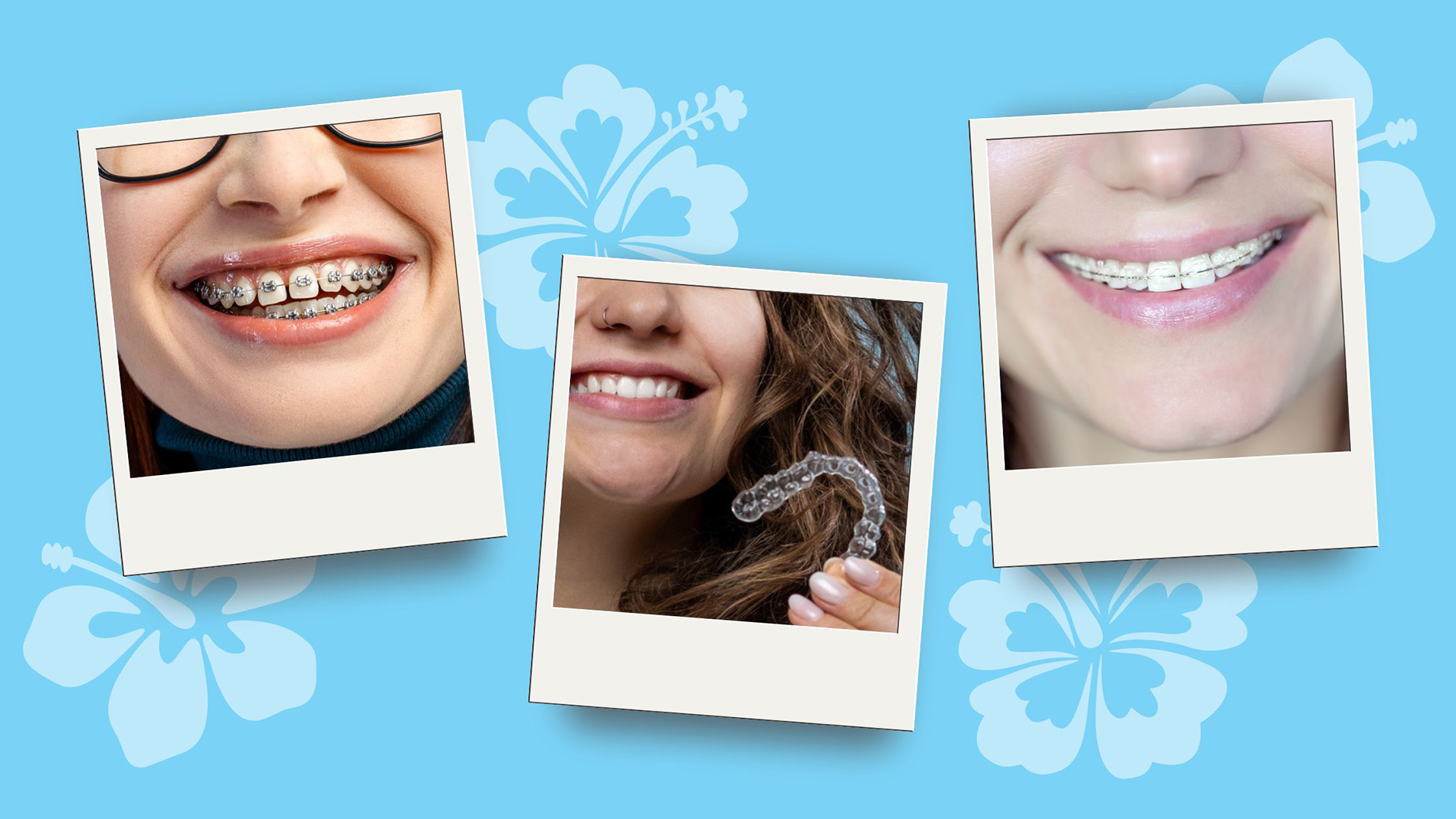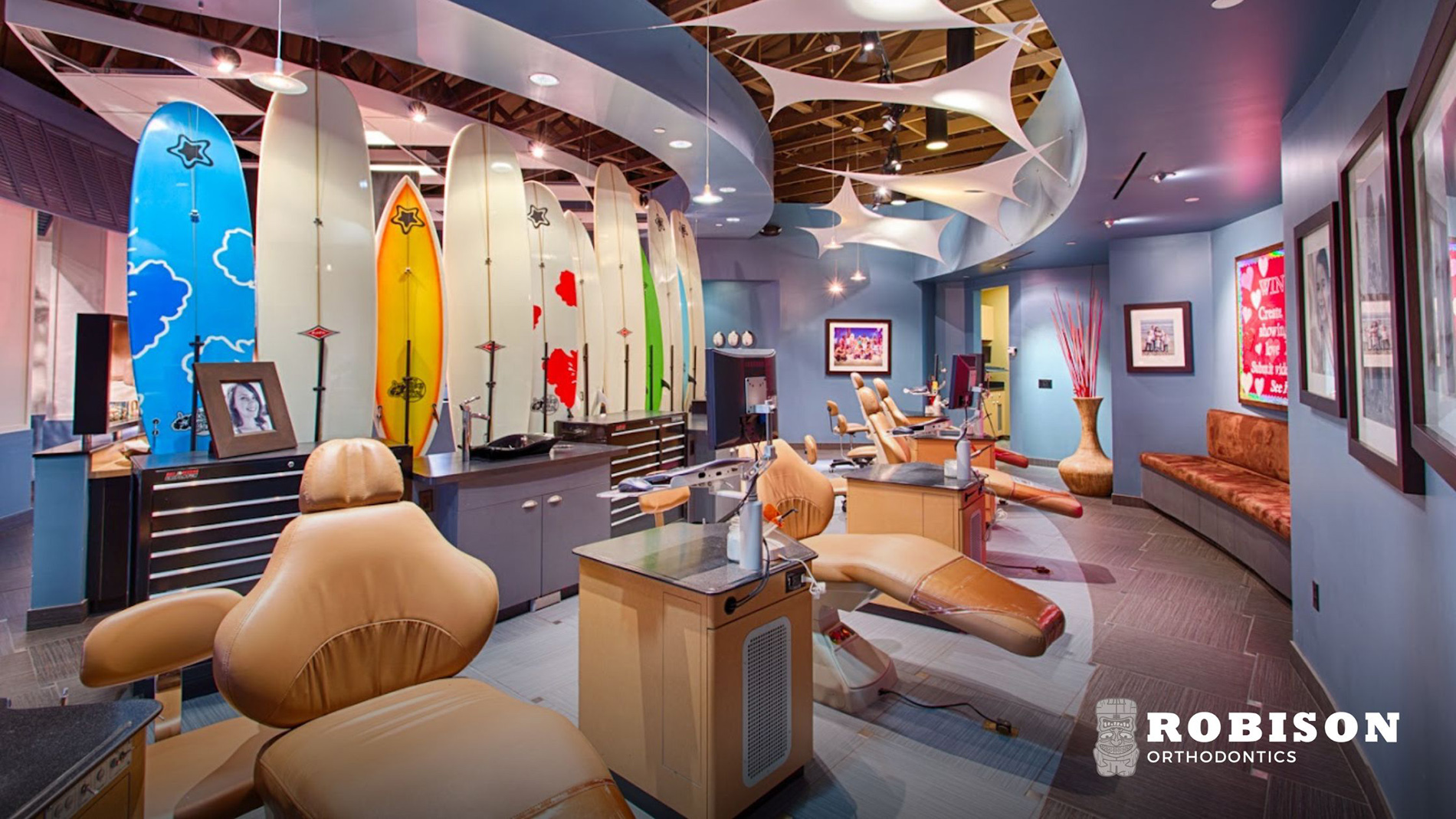
Braces are dental appliances meant to be worn for an extended period of time in order to straighten the wearer’s teeth. As orthodontics is a dental specialty that focuses on aligning a person’s bite and straightening their teeth, braces must be installed by an orthodontist who is specifically trained to identify irregularities in a person’s jaw and teeth and prevent and treat those irregularities. Braces are one of the most common solutions for bite irregularities.
Braces are frequently installed during adolescence once all deciduous (baby) teeth have fallen out and been replaced by permanent teeth, but adults can benefit from braces as well. As a result, orthodontists work with people of all ages, most of whom have many questions about what they can expect as they seek to straighten their teeth. One of the most common questions that both children and adults ask about the braces process is, “How long do braces take?”
The answer to this question depends on a variety of factors, and the answers to other questions involving braces. Consider these frequently-asked questions as we dive a bit deeper into what can impact braces treatment duration.
How Long Do Braces Take to Straighten Teeth?
The amount of time needed for braces to straighten a person’s teeth will differ for each individual since braces treatment primarily aims to correct specific bite irregularities. The length of time necessary to complete this objective won’t be the same for each case because braces are tailored to the wearer’s mouth and dental needs. In addition, people respond differently to braces treatment. Some people may only need braces for a number of months, while others may require several years to finish their corrective braces treatment.
Your orthodontist can give you a general time range you should expect to wear your braces, depending on your age, the type of corrective dental appliances you have, how closely you follow your treatment guidelines, and the severity of your bite issues. You can expect to wear braces for at least six months, though treatment can take three years or more.
How Long Does the Process of Putting on Braces Take?
Before braces can be installed, the orthodontist must make an impression of the mouth, a digital model of the mouth/jaw, or both. The orthodontist needs to have a clear idea of the person’s current anatomy so they can design the braces accordingly. This ensures that the braces will fit the mouth and correct the irregularities of the teeth as intended.
Once the mouth is molded or modeled and the orthodontist prepares the pieces needed for the arrangement of the braces, an appointment can be scheduled to apply the braces. This process takes one to two hours on average from start to finish. If irregularities are severe enough, the braces may need to be applied over two appointments at the orthodontist’s office.
How Long Do Braces Take on Average?

On average, braces tend to require between one to two years of wear for most people. The amount of time braces are needed can vary quite a bit depending on age and the type of braces selected. Children often need to wear braces for shorter spans of time compared to adults who get braces treatment.
Adolescents typically need between 15 and 18 months to fully correct an irregular bite, though this depends on other factors such as the type and severity of the issues being addressed and where/how the teeth and jaw are positioned before treatment is prescribed. Adults will normally have braces for two to three years. As mentioned, most individuals will need slightly less or slightly more time than these ranges – ask your orthodontist what you can expect as your treatment progresses.
Why Do Braces Take So Long?
Adults require more time on average for corrective braces treatment because major misalignments or other pre-existing dental issues have had more time to develop and solidify over the course of their lives. This often means the necessary treatment is more involved or intensive than that of children who require dental correction but receive treatment earlier in their lives. A child’s jaw is still growing and more malleable than an adult’s. Their teeth respond more easily to braces and will reposition more quickly than an adult’s teeth.
Regardless of age, braces must be in place a matter of months or years to effect positive change in the mouth. While braces are very effective at exerting the gentle pressure needed to influence teeth to move into position, the process occurs slowly. Fortunately, this means braces cause minimal pain while creating lasting, healthy changes in a person’s bite.
What Can Affect How Long a Person Needs Braces?

Braces are used to straighten teeth, fix misalignments or abnormalities, and ensure the person’s jaw or bite is as it should be. The degree of one or more of these potential issues will typically dictate the type of braces the person can wear, other corrective devices that may be required, and the amount of time needed before the treatment is finished, along with other influencing factors.
Type and Degree of Teeth Misalignment
The severity of the misalignment is one of the main determinants of the length of any orthodontic treatment. The misalignment, in tandem with the size of an individual’s teeth and mouth space, affects what the braces will be able to correct.
For example, orthodontists must consider whether there is enough space in the person’s mouth to straighten the misalignment with relative ease or whether overcrowding must first be addressed, which can influence the duration of braces treatment. Crowded teeth, or an overcrowded mouth, occurs when there isn’t enough space in the mouth for all teeth to be positioned correctly. This can cause shifting, a poor bite, and even overlapping, which can create a risk for cavities and other dental issues. In some cases, it may be necessary for an orthodontist to remove one or more teeth to create room for properly aligned teeth.
The severity of the misalignment also affects the length of the braces process. A slight misalignment can take much less time to correct with braces than with severely misaligned teeth. In addition to crooked teeth, any gaps in a person’s teeth, whether naturally occurring or resulting from tooth extraction, will also need to be addressed. Closing large gaps can take much more time than closing smaller gaps.
The Nature of Any Bite Issues
A person’s bite describes how their top teeth and bottom teeth align in relation to one another. Bite issues can be caused by tooth misalignment and jaw positioning and can be corrected with braces. For example, open bite (when upper and lower teeth do not meet), underbite (when bottom teeth are in front of top teeth), overbite (when top teeth are in front of bottom teeth), or a crossbite (misalignment of the back teeth) are common bite issues that necessitate braces treatment.
If someone needs treatment for their bite, they likely will need to wear braces for a longer period than someone with crooked teeth. Shifting of many teeth and repositioning of the jaw must occur over time and can necessitate a longer treatment schedule.
Braces and Orthodontic Appliances Prescribed

The type of braces recommended can have some bearing on how long braces treatment will take.
The different options that may be available for an individual is largely determined by how much correction their teeth and jaw require.
- Traditional Braces – Traditional braces are metal and involve adhering metal brackets along the patient’s teeth, which are then connected using metal wire threaded between the brackets. The wires are periodically tightened every few weeks so the correction of the teeth’s alignment can occur slowly and steadily over time. Traditional braces are the most commonly prescribed braces and can be extremely effective at correcting severe misalignments.
- Aligner-Style Braces – Another form of corrective treatment is aligner-style braces. Aligners are clear, plastic-like trays that are removable and replaced every few weeks as the teeth shift consistently over an extended period of time. These removable aligner trays are meant to be worn the majority of the time and are generally only taken out when eating meals or cleaning the teeth.Aligners are more likely to require a shorter overall period of wear for the patient – 12 to 18 months – compared to traditional braces, but they are not a good fit for everyone. Clear aligners aren’t ideal for all dental issues and thus aren’t a viable option for all patients; they are usually prescribed to candidates with common misalignments.
- Other Options – Other braces include mini and partial braces, self-ligating braces, and ceramic braces. Self-ligating braces include a built-in mechanism to hold braces components in place and often require fewer visits for tightening and maintenance. Ceramic braces are similar to traditional braces but are made of a tooth-like ceramic material. Both options are usually in place for the same amount of time as traditional braces.
- Other Orthodontic Tools – Orthodontic tools that may be prescribed in addition to braces include headgear, rubber bands, and palatal expanders. Rubber bands and headgear easily attach to traditional types of braces; bands are designed to be worn constantly, while headgear is typically used at night, worn around the person’s head or face. These function to apply pressure to the teeth and jaw to encourage proper positioning. Palatal expanders easily fit into the roof of the mouth and widen a patient’s jaw using gentle force. Expanders are frequently prescribed to children and can help to avoid the need for braces altogether or lessen the overall wear-time for braces in the future.
These additional devices can have an impact on how long a person will need to wear their braces. In most cases, they are intended to shorten the necessary treatment time by making braces treatment more effective.
Diet, Lifestyle, and Patience
Keeping up with dental health and remaining active in the orthodontic treatment plan can have an impact on how long a patient needs to wear braces. In particular, patients can avoid prolonged wear if they keep up with their braces as instructed by their orthodontist. Actions you can take to accomplish this include seeing your dentist for regular cleanings, visiting your orthodontist for routine adjustments, and following any instructions for special appliances/devices related to your treatment.
It’s also advised to follow your orthodontist’s advice regarding what you shouldn’t eat during braces treatment, like foods that are hard, sticky, and crunchy, including popcorn, gum, candy, and certain hard, raw vegetables. Ignoring your orthodontist’s instructions about foods to avoid can affect how long you may have to wear them. Foods that aren’t braces-friendly can potentially cause parts of the dental equipment to break off, setting you back and requiring an emergency appointment. If you play sports or engage in rigorous physical activity, wearing a mouthguard to protect your teeth/braces and avoid sustaining a mouth injury is also a good idea.
What Happens If Braces Are Removed Too Early?
Many people request early removal of braces due to upcoming events or because they have grown weary of braces treatment. In some cases, the orthodontist may be able to adjust treatment if it has progressed as expected. However, even if it seems that treatment is complete because the teeth and jaw appear properly aligned, it’s still possible there are less visible components that require more time for correction.
It is crucial to give the bones and soft tissues in the mouth time to grow and “set” around the teeth in their new positions. Removing braces too early can undo the progress already made, as teeth can easily shift back into their original, improper positions. The orthodontic treatment schedule was created to ensure that teeth have plenty of time in the correct position and that tissue is properly formed to support them. Deviating from this schedule can create new dental issues and cause existing issues to resurface.
Get in Touch With an Experienced Orthodontic Office

Robison Orthodontics in Gilbert, AZ is passionate about helping each patient reach their goals and improve their smile along with their dental health. A major component of this mission involves answering your questions about your orthodontic treatment. If you’d like to learn more about what you can expect while wearing braces or any other orthodontic appliance, contact our office today!

Dr. Tyler Robison is an alum of Mesa’s Mountain View High School. He graduated from Brigham Young University before being accepted to the “Top Ten-nationally ranked” University of Louisville in Kentucky, where he earned his Doctorate in Dental Medicine and a Master’s Degree in Oral Biology. He graduated with honors in the top ten percent of his class. Dr. Robison continued at the University of the Pacific in San Francisco, where he received a second master’s degree in dental science and his orthodontic certification.

